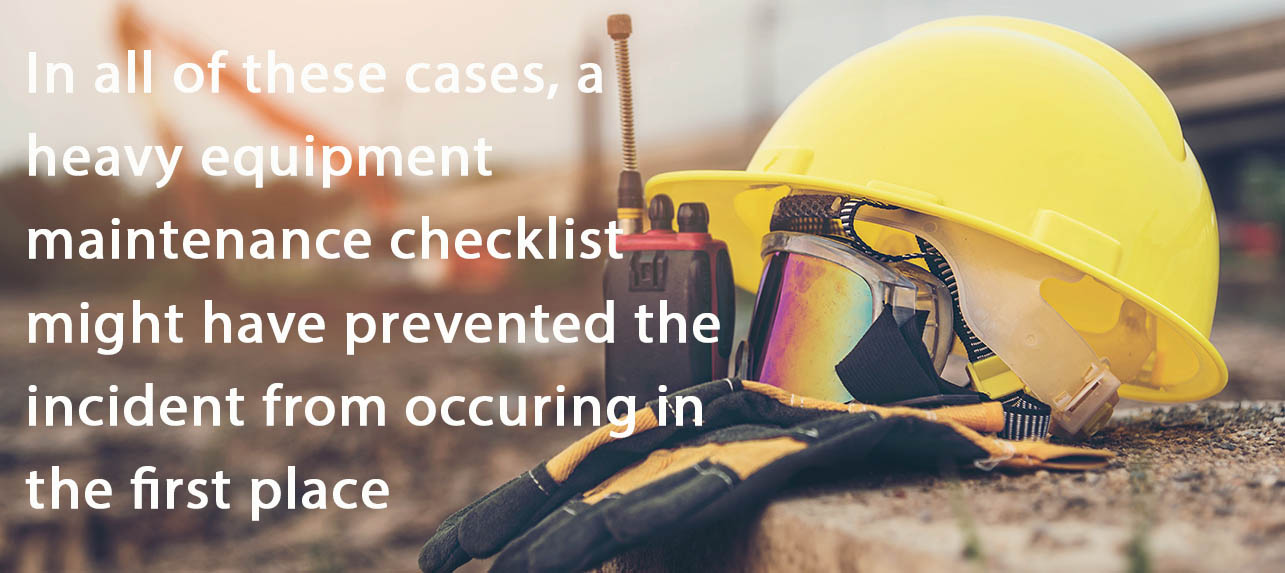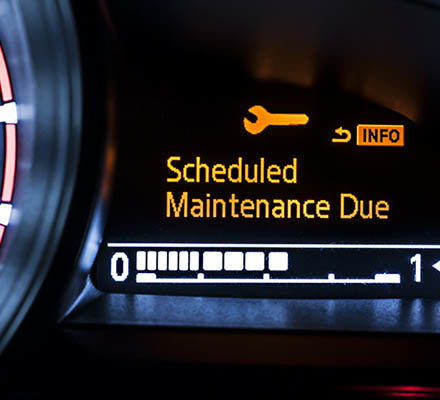Learning Zone
Benefits of a heavy equipment maintenance checklist
Vehicles and associated assets may be one of the most capital-intensive considerations for your operation…
But unplanned downtime often has the biggest impact on your bottom line.

For heavy equipment that is often used at job sites, detailed maintenance checklists are the key to early detection of potential issues that disrupt operations, impact customer service and drive up costs.
Ultimately, preventive maintenance is about finding and fixing items in need of attention before they cause a breakdown or unscheduled repair. With a heavy equipment maintenance checklist you will be able to complete repairs before they lead to a much more expensive problem, for example bulldozer repairs can range in price from $30,000 to more than $200,000.
What are the other benefits of having a heavy equipment maintenance checklist…?
The success of any business that uses heavy equipment is based on its reliability. While there are many factors that comprise a successful operation, few can cripple productivity as quickly as equipment breakdowns.
With regular maintenance you can ensure that your operation’s heavy equipment can handle the job it was purchased to perform. You can also:
- Increase the lifespan of your equipment by keeping it running longer, which in turn minimizes the need to invest capital in replacement units. Ultimately, you will get a greater return on your investment if you run highly efficient equipment for a longer amount of time.
- Ensure fleet compliance with a myriad of safety regulations, which in turn ensures the safety of your workers. Employee safety is a top concern for any business, and heavy equipment operations are no exception.
- Keep on top of regular inspection and service intervals to limit the potential for a serious and costly accident. Those costs can add up quickly and can include workers compensation, insurance expenses, fines for violations determined to have caused an incident, and even the cost of replacing injured employees temporarily or permanently.
- Lower the chances of one of your workers getting injured. Consider how equipment that fails unexpectedly can lead to disastrous circumstances.
Just think, what would happen if a vehicle’s horn failed to sound, leaving the operator unable to warn another driver, or if it’s brakes didn’t work and the vehicle couldn’t be stopped safely – imagine how a failed system could cause a heavy object to fall and lead to serious injury…

There are also ways that your company could be held liable for negligence if equipment fails and causes an injury or damage to property. That’s especially true if a heavy equipment maintenance checklist is not followed and any repairs that are deemed necessary are not made.
Failing to maintain this type of equipment can also have a negative impact on productivity. When equipment fails, workflow is interrupted and deadlines for customers are not met.
What approach to heavy equipment maintenance works best?
Overall, it’s best to be proactive in your approach to heavy equipment maintenance. One of the surest paths to implementing a successful program is to plan for maintenance when certain milestones – like operating hours or mileage readings – approach pre-determined levels.
Advanced fleet maintenance software has those capabilities, and many more that directly help improve the effectiveness a heavy equipment inspection checklist.
Inspection and defect management software also allows you to collect real-time information in the field or shop to monitor the condition of vehicles and equipment. Using a heavy equipment maintenance checklist, technicians can report potential concerns or defects electronically and directly into the management solution, or however else they are reported according to your defect management process.
That data also lets you know exactly when and where each check was completed including time, date and location, with the ability to attach photos and signatures, too. With a complete and auditable trail, you’ll have valuable maintenance history information and the proof you need for regulatory and legal compliance.
Fleet maintenance management software also removes the need for paper forms and associated administrative and data entry processes. Heavy equipment maintenance checklists can even be enabled on mobile devices using a forms app, including smartphones or tablets.
By using a heavy equipment maintenance checklist for your equipment, you will reduce unscheduled downtime and improve productivity and safety, as well as lower fleet maintenance costs.
And perhaps most importantly your clients will be more satisfied with the projects and service you are able to provide and finish on time.



